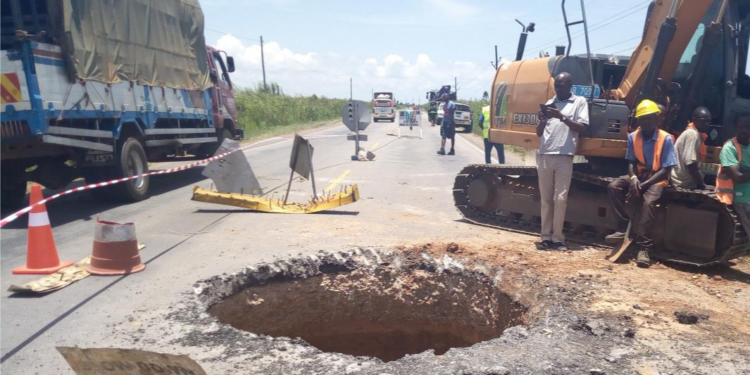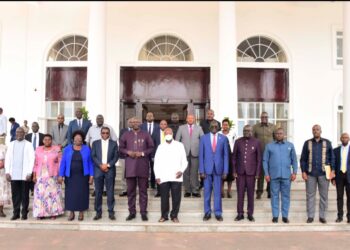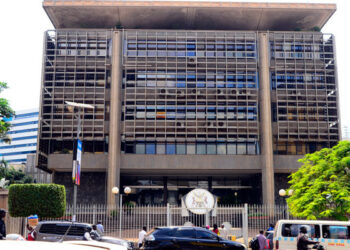Uganda National Roads Authority (UNRA) has today revealed it is in advanced stages of reconstructing the whole of Lwera stretch on the Kampala-Masaka highway.
The reconstruction is intended to be a once and for all solution to the frequent breakdowns experienced on several parts of the road, which has largely disrupted transport activities along the highway.
The more than 20 kilometre part of the road that runs from Mpigi to Kalungu district has experienced frequent breakages, more prominently towards Christmas and Easter holidays.
Not only has this paralyzed transport, but also puts the lives of hundreds of people plying the road on a daily basis at a great risk.
The road which acts as a gateway to Western Uganda, Kenya, Rwanda, Burundi, Democratic Republic of Congo is said to breakdown severally, due to continuous illicit sand mining and rice growing activities in the Lwera wetland area.
Other reports cite heavy traffic exarcabated by heavy sinotruck sand carriers as one of the major reasons for the breakdowns.
Head of Bridges and structures at UNRA, Engineer Lawrence Pariyo says that they are in the final stages of redesigning the stretch, after carrying out studies and inspections on the affected section, to establish the cause of the breakdowns.
He attributes the breakdowns to failure by previous contractors to remove old culverts, when the road was under rehabilitation, saying they have been sinking and breaking one after the other.
“Sand mining and rice growing in this area have greatly affected the section by altering its topography. We are now re-engineering the section to come up with a lasting solution. We are also considering raising some sections of the wetland with bridges, other than the existing culverts,” Pariyo said.
According to Pariyo, the shift in physical appearance of the land, and hydrology, which is the distribution and movement of water both on and below the earth’s surface, changed the functionality of the initial design of the road.
However, Sam Mwesigwa, a Wakiso district roads Engineer blames UNRA for inadequate assessment of the problem, and attributes frequent breakdowns to inadequate engineering skills possessed by the previous manning team.
Recent efforts by engineers to trace the broken culverts by excavating and examining sunken parts of the road did not bear any fruits, due to the fact that no old culverts were discovered, pointing to sand mining as the root cause of the problem.
In their final analysis the engineers pointed out that the two activities, suspected to be sand mining and rice growing have been a leading cause for a decrease in water retention capacity by soils in the area, leading to road flooding.
Even as the National Environment Management Authority (NEMA) issued a statement warning that continuous sand mining activities and rice growing in Lwera wetland posed a serious threat to transport along the Kampala-Masaka highway, various illicit acitivities like sand mining in the wetland continue unrestrained.
A case in point, investors continue to station dredgers in the middle of the wetland and scooping tonnes of sand more than 10 metres in the swamp, from an area covering more than 100 kilometres underneath the road.
Despite this shocking revelation, NEMA has exhibited reluctance in taking serious steps against sand miners, whose activities have continuously damaged the road, and put lives of passangers and pedestrians in peril.
Do you have a story in your community or an opinion to share with us: Email us at editorial@watchdoguganda.com













